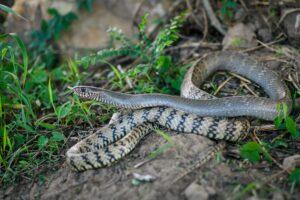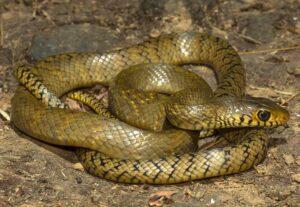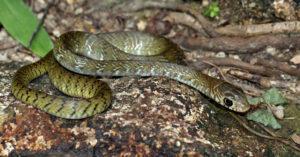The oriental rat snake, also known as the Indian rat snake, dhaman, or darash is a common colubrid native to parts of South and Southeast Asia. It is semi-arboreal, diurnal, medium-sized, active, and moves very fast. It is often mistaken for a cobra but is much longer and has a thinner neck.
Scientific Classifications
- Suborder:Serpentes
- Family:Colubridae
- Genus:Ptyas
- Species:P. mucosa
Conservation Status
Description
Size
The large snakes reach around 4 ft 11 inches to 6 ft 5 inches (1.5-1.95 m) of total length on maturity. Some may even exceed 6ft 7 inches (2 m). The largest recorded size for this species is 12 ft 2 inches (3.7 m), the second highest length among all living colubrid snakes.
Despite such large sizes, they are quite slender, with even a 2 m specimen measuring only 1.6-2.4 in (4-6 cm) in diameter. Plus, the average weight of these snakes caught in Java was only 1-2 lbs (877-940 g), though the larger males of over 2.3 m length may weigh over 5.5 lbs (2.5 kg).
Color and Appearance
Their color varies from pale browns in dry areas to almost black in moist forests. It has more or less prominent black crossbands at the rear part of the body and the tail. The belly is yellowish.
The lower lips have black bands, characteristic of rat snakes, and the head is covered with smooth scales. The snout is fairly pointed, and the pupils are large and round. The scales below and behind the eye have black edges.
Are They Dangerous to Humans
Though oriental rat snakes are harmless, they get excited easily. When threatened, they make a growling sound and inflate their necks, mimicking the venomous king cobra and Indian cobra that often gets them killed by humans.
In captivity, the territorial snakes defend their turf aggressively, often startling and striking at passing objects.
Oriental Rat Snakes at a Glance
Distribution
Its range includes Afghanistan, Bangladesh, Andaman and Nicobar Islands, Cambodia, China (Guangdong, Zhejiang, Jiangxi, Hubei, Fujian, Tibet, Hainan, Guangxi, Hong Kong, Yunnan), Myanmar, Sri Lanka, Taiwan, India, Indonesia (Bali, Sumatra, Java), Laos, Iran, Nepal, west Malaysia, Thailand, Pakistan (Sindh region), Turkmenistan, and Vietnam.
Habitat
It dwells in wetlands, forest floors, farmlands, rice paddies, and suburban areas. It frequents urban areas in search of rodents.
Lifespan
The oriental rat snake has an average lifespan of 11 years.
Predators
The adults have no natural predators, but the young are the prey of the king cobra having the same range. The babies are eaten by larger reptiles, birds of prey, and mammals of medium size.
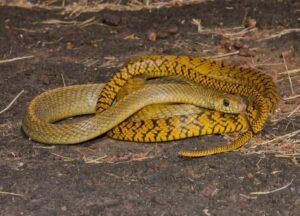
In some areas, rat snakes are aggressively hunted down by humans for their skin and meat. China and Indonesia have harvesting and trade regulations in place, but they are often flouted.
Diet
They prey on birds, amphibians, mammals, and small reptiles. Instead of constricting, they weaken their prey by sitting on it, using their body weight to subdue it. This behavior makes it distinct from most other colubrids.
Reproduction
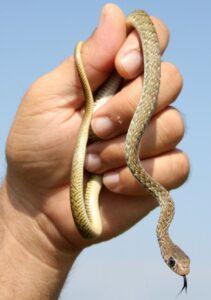
Oviparous (lays eggs that hatch outside the body)
Late spring and early summer is their mating season though tropical climates see them reproduce the year round. The males establish territorial boundaries by a test of strength ritual that they perform by intertwining their bodies, often misread as a ‘mating dance’ between opposite sexes. Several weeks post-mating, females lay 6-15 eggs per clutch.
Source
static.thainationalparks.com, live.staticflickr.com, res.cloudinary.com, scontent.fccu25-1.fna.fbcdn.net, live.staticflickr.com

